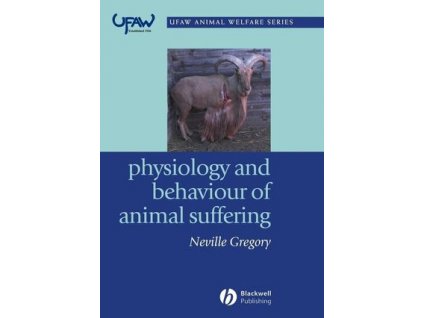- Vazba: lepená
- Počet stran: 384
- Nakladatel: British Small Animal Veterinary Association; 1 edition (21 Dec. 2018)
- Jazyk: angličtina
- ISBN-10: 1905319843
- ISBN-13: 978-1905319848
- Rozměry: 21.1 x 1.8 x 29.7 cm
BSAVA Manual of Canine and Feline Shelter Medicine: Principles of Health and Welfare in a Multi-animal Environment – Rachel Dean, Margaret Roberts, Je
Související produkty
Detailní popis produktu
ABOUT THE AUTHOR
Rachel Dean, BVMS, CertSAM DSAM(Feline), PhD, MSc, MRCVS, RCVS, graduated from the University of Glasgow in 1996 and worked in mixed, dairy and small animal general practice before becoming the Fort Dodge Feline Fellow at the Feline Centre at the University of Bristol (2002-2005). She undertook a PhD (Epidemiology of feline injection site sarcomas) at the Royal Veterinary College/Animal Health Trust before becoming the Founding Director of the Centre for Evidence-based Veterinary Medicine/Clinical Associate Professor in Feline Medicine at the School of Veterinary Medicine and Science, Nottingham (2009-2018). Rachel is currently the Director of Clinical Research and Excellence in Practice and co-chairs the Clinical Board for Vet Partners. Rachel is the inaugural chair of the ACV and co-founder of the Vets in the Community clinic in Nottingham. Rachel holds the RCVS diploma in feline medicine, an MSc in Evidence-based Healthcare from the University of Oxford and is recognised RCVS Specialist in Feline Medicine and a Senior Fellow of the Higher Education Authority.
Maggie Roberts, BVM&S, MRCVS, graduated from the University of Edinburgh in 1986 and spent most of her career in private small animal practice, where she developed an interest in feline medicine. She has also worked in Malawi and Australia and was appointed the first Cats Protection Veterinary Officer in 1997. She became a partner in private practice but returned to Cats Protection as Head of Veterinary Services in 2006. Maggie is now Director of Veterinary Services and has responsibility for the charity’s work on cat welfare and neutering. Her professional interests are shelter medicine and feline population control and she is a founder member of the Association of Charity Vets. She was the recipient of the J A Wight (aka James Herriot) Memorial Award for outstanding contributions to the welfare of companion animals in 2013.
Jenny Stavisky, BVM&S, MRCVS, PhD, FHEA, qualified from the University of Edinburgh in 2002. After starting out in mixed practice in the Peak District, she moved to the University of Liverpool to take a PhD in epidemiology and virology. This was followed by a move to the University of Nottingham School of Veterinary Medicine and Science in 2010 to work in shelter medicine research. She is now a Clinical Lecturer in Shelter Medicine at Nottingham, which involves teaching practical skills to final year students within shelters, charity and primary care practice, as well as applied clinical research. She is a founder member of the ACV and co-founder of the Vets in the Community Clinic. She was named Chris Laurence Vet of the Year at the 2017 CEVA Animal Welfare Awards.
TABLE OF CONTENTS
What is shelter medicine?
- Top tips for a shelter medicine vet
Ethics and animal welfare
- Using the ethical framework to make decisions
Pragmatic decision-making in the charity situation
- Dealing with the elderly thin cat
- Dealing with the elderly dog
- Dealing with heart murmurs in dogs and cats
- Dealing with the itchy dog: is it atopic dermatitis?
Population control and management
- Setting up a population control program
- TNR/CNR checklist
- Euthanasia and shelters
Optimizing neutering programmes
- General anaesthesia protocols for early neutering
Shelter metrics
Principles of infectious disease and transmission
Biosecurity in shelters
- A brief overview of disinfectants
Shelter design and the flow of animals through a shelter
Preventive medicine in the shelter environment
- Intake assessment for animals entering shelters
Diarrhoea in the dog in the shelter environment
Diarrhoea in the cat in the shelter environment
Respiratory disease in the dog in the shelter environment
- Rehoming a coughing dog
Respiratory disease in the cat in the shelter environment
- Rehoming a snotty cat
Skins diseases in shelter animals
Managing FeLV/FIV in the multi-cat/shelter environment
Managing feline coronavirus and feline infectious peritonitis in the multi-cat/shelter environment
- Toxoplasmosis
- Exotic diseases in shelters
- Zoonotic diseases in shelters
Behaviour and stress management in the shelter environment
- Current thinking on dog behaviour
- Current thinking on cat behaviour
- Socialization of puppies
- Socialization of kittens
- Dealing with the aggressive dog
- Dealing with the hard-to-handle cat
- Environmental enrichment for dogs in shelters
- Environmental enrichment for cats in shelters
Charities, their policies and their staff
Law and shelter medicine
- Dealing with a stray dog
- Dealing with a stray cat
The shelter veterinary team
Working with the non-vet shelter team
- Hoarding
- Non-accidental injury
Training and education in the shelter environment
Doplňkové parametry
| Kategorie: | Veterinární ošetřovatelství |
|---|---|
| EAN: | 9781905319848 |
| Jazyk: | angličtina |
| Vazba: | měkká |
| Počet stran: | 384 |
| Nakladatel: | Wiley-Blackwell, 2018 |
| ISBN: | 9781905319848 |
| Rozměry: |
Buďte první, kdo napíše příspěvek k této položce.
Pouze registrovaní uživatelé mohou vkládat příspěvky. Prosím přihlaste se nebo se registrujte.
| Výrobní společnost : | John Wiley & Sons, Inc. |
|---|---|
| Adresa : | John Wiley & Sons, Inc. 111 River Street, Hoboken, NJ 07030-5774, USA |
| E-mail : | product_safety@wiley.com |
| Zástupce výrobce v EU : | Wiley-VCH GmbH |
| Adresa zástupce v EU : | Wiley-VCH GmbH Boschstr. 12, 69469 Weinheim, Germany |
| E-mail zástupce v EU : | product_safety@wiley.com |
.png)






